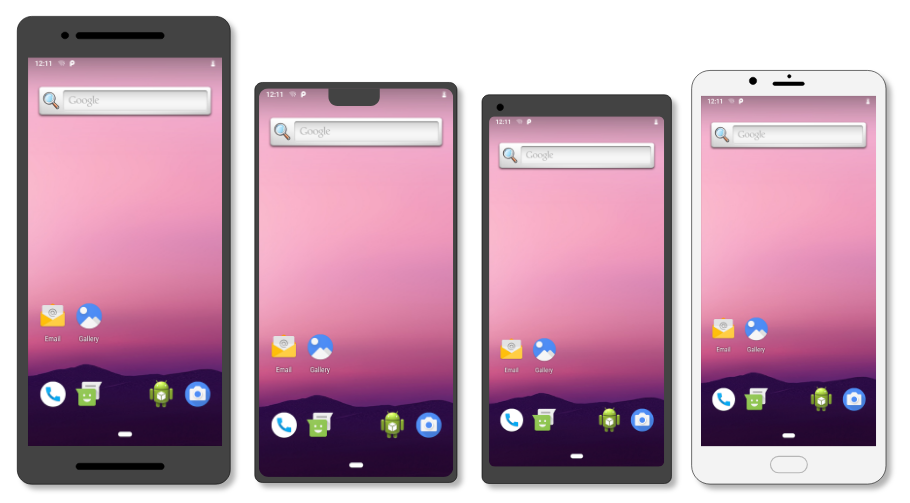A Generic System Image (GSI) is a pure Android implementation with unmodified Android Open Source Project (AOSP) code, runnable on a variety of Android devices.
App developers can install and run the latest Android GSIs to perform app testing on a variety of existing Android devices and using GSIs from different Android OS release stages, including Developer Preview and Beta builds. Adding GSIs to your verification and testing processes can provide you with some extra benefits:
- Broader test coverage on a greater set of real devices
- More time to fix app compatibility issues
- More opportunities to fix compatibility issues in Android that are reported by app developers
The GSI project is open source and helps improve the Android ecosystem by providing more ways to improve app and OS quality before each release of Android.

GSIs include the same core system functionalities for all devices that they're installed on. In other words, a GSI does not include device manufacturer's customizations. Because of this, you might encounter behavioral differences in the following situations:
- Interactions that involve the UI
- Workflows that request newer hardware features
Check device compliance
GSIs can only function on devices with the following characteristics:
- Bootloader is unlocked.
- Fully Treble-compliant.
- Launched with Android 9 (API level 28) or higher. Devices upgraded to Android 9 from an earlier version might or might not support GSIs.
To determine whether your device can use a GSI and which GSI OS version you should install, do the following:
Check for Treble support by running the following command:
adb shell getprop ro.treble.enabled
If the response is
false, the device isn't compatible with GSIs and you shouldn't continue. If the response istrue, continue to the next step.Check for cross-version support by running the following command:
adb shell cat /system/etc/ld.config.version_identifier.txt \ | grep -A 20 "\[vendor\]"
In the output, look in the
[vendor]section fornamespace.default.isolated.If the value for that attribute is
true, then the device fully supports Vendor Native Development Kit (VNDK) and can use any GSI operating system (OS) version that is newer than the on-device OS version. Whenever possible, use the latest GSI OS version that is available.If the value for the attribute is
false, then the device isn't fully VNDK-compliant, and the device can use only a GSI for the same on-device OS version. For example, an Android 10 (API version 29) device that isn't VNDK-compliant can load only an Android 10 GSI image.The GSI CPU architecture type must match the device's CPU architecture. To find the right CPU architecture for the GSI image, run the following command:
adb shell getprop ro.product.cpu.abi
Use the output to determine which GSI image to use when flashing your device. For example, on a Pixel 5, the output would indicate that the CPU architecture is
arm64-v8a, so you would use thearm64type of GSI.
Download GSIs
There are a few ways to get GSIs, depending on your development needs:
- For Android Preview GSIs and Android GSIs with GMS, download the images from the GSI release page.
For pre-built GSI images without GMS applications, download the images from the AOSP CI site:
To build Android GSIs without GMS, download source code from AOSP and build your GSIs.
Install a GSI
Installing a GSI is device-dependent. Refer to your device's manufacturer for the exact tools and procedures. For Google Pixel devices such as the Pixel 3 and newer, there are several ways to install:
- Manually flashing GSI images: see Requirements for flashing GSIs
- Using Dynamic System Update (DSU) for devices that already run Android 10 or higher: see the Dynamic System Updates page
Give feedback
GSIs are intended to help you validate your apps on Android. We appreciate your feedback on the images, the tools, and the process for using GSIs on your devices.
To notify us of bugs or feature requests, use the dedicated issue tracker component for GSIs.
